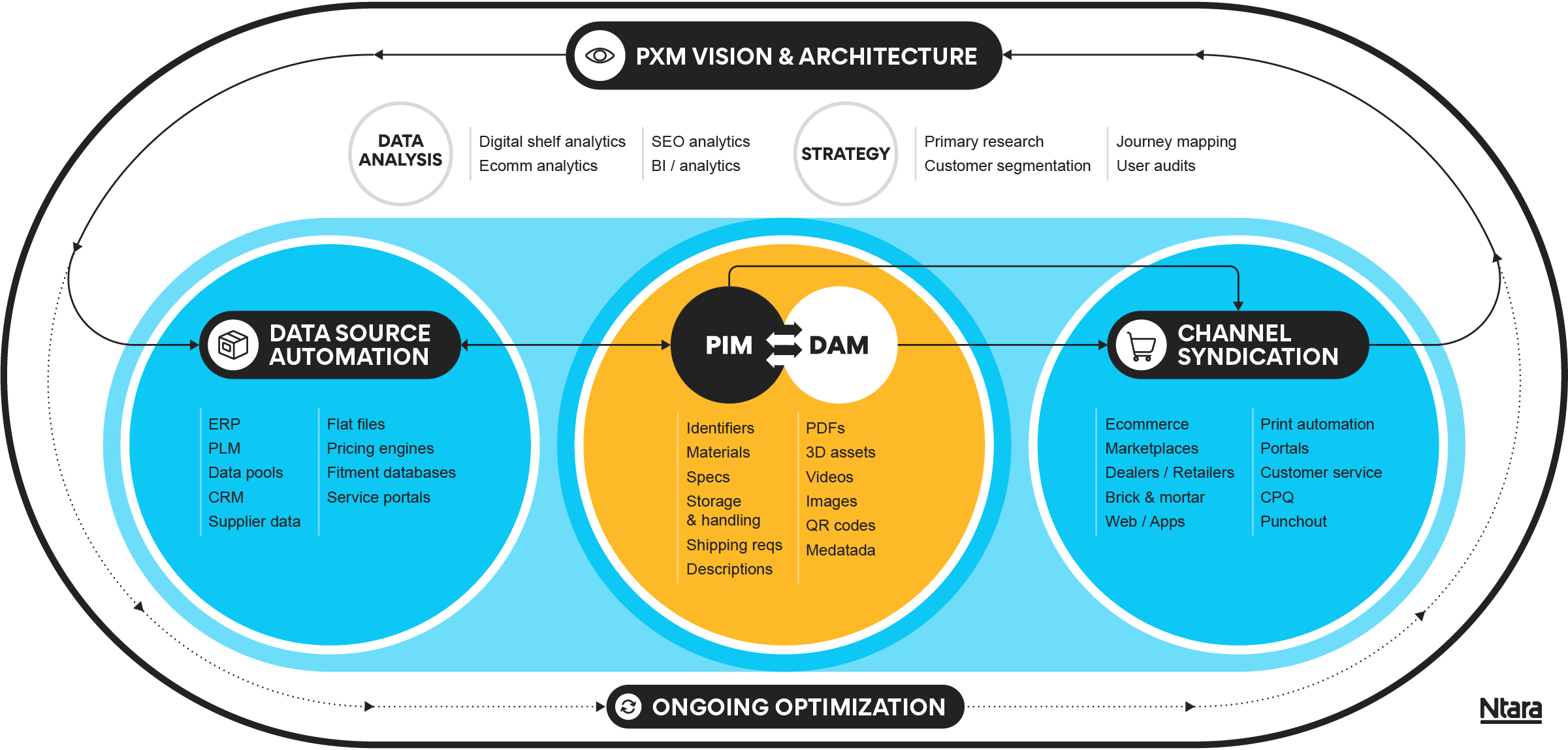Modern consumers and B2B buyers have similar shopping habits but wildly different buying experiences.
B2B buyers often deal with salespeople, dealers, distributors and buying committees, while consumers often transact online, wherever they want, whenever they want.
On both sides, this plethora of choices means no two purchase paths are the same. Yet, customers expect consistent access to information every step of the way.

That means every marketplace needs consistent product specs, or they might lose trust in your brand. Every reseller needs up-to-date brochures, or they’ll buy a different brand that does.
To stay competitive, your product must be represented consistently and accurately everywhere your customers shop.
It isn’t easy, but it is possible. Our advice after 25 years in the business? Prioritize the development and implementation of a product experience management (PXM) strategy.

What is PXM?
PXM stands for product experience management. Here’s how we define it.
Product: the finished good(s) you sell
eXperience: the sum of a product’s presentation and the actions taken by buyers across all potential channels
Management: optimization of the buying experience through technology, people, and processes
A PXM strategy helps your business create an optimal product experience. This increases sales, brand loyalty, and lifetime value of customers.
How to build a PXM strategy
PXM strategy requires an understanding of customer expectations.
Conduct research to identify what they want and where/how they want it.
Analyze existing data to determine what you’re doing that works and what needs improvement. What complaints do you get in live chat or customer service calls? How’s your web traffic and conversion on product detail pages? You already have the data; you just need to look at it through a new lens.
Optimize your DAM and PIM software implementations to save your business time and money. Automate processes for creating and managing product data and digital assets. Integrate DAM and PIM with back-office systems. Syndicate product data and assets to your downstream sales channels. Don’t just establish a single source of truth. Use this software to gain incredible efficiency in process, so you can get your staff working on higher value things. And if you aren’t sure where to start, create research programs to assess internal attitudes about and usage of DAM and PIM.
Fun fact:
In 2024, Ntara helped two companies identify 50,000 hours of person-time that could be saved with more efficient DAM and PIM practices.
Maintain stakeholder alignment beyond your big IT projects. Distribute periodic ROI reports to your leadership and staff. Keep them informed of your wins and what you learn. Remind them how your PXM investment is moving the company forward. Create change management programs to educate team members across all departments on the value of DAM, PIM, and ongoing PXM optimization.
Implement governance processes and committees to protect your PXM investments. Monitor how DAM and PIM software are adopted in your business and encourage team members to jump on board. Empower your governance committees to continually optimize product processes and communicate regularly with team members.
Active PXM champions in your business who understand PXM. Empower them to advocate for the ROI of PXM to the leadership team, department heads, and staff throughout the company.
Ntara’s PXM framework
If this sounds like a lot of work, that’s because it is. PXM isn’t a simple project; it’s a long-term paradigm shift. But in the age of digital commerce, the businesses that adopt a PXM mindset will differentiate themselves and win on the digital shelf.

That’s why we built this PXM framework. It comes from decades of experience developing digital strategies, conducting research, integrating software, and optimizing tech stacks. Using this framework, we help businesses optimize their back-office systems and deliver better digital experiences for their customers. (Read: Gain trust and boost sales.)
If you’ll be at DAM New York 2024, we’d love to talk more about PXM. Come see our team at booth 16. Let’s discuss how your business does product strategy today and how PXM could help you scale further in the future.
Schedule a chat with our team at DAM New York.